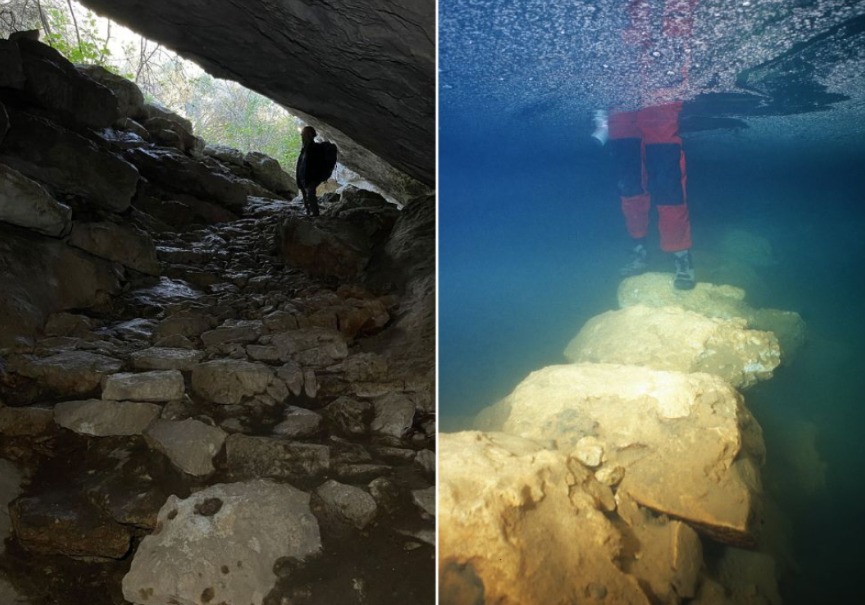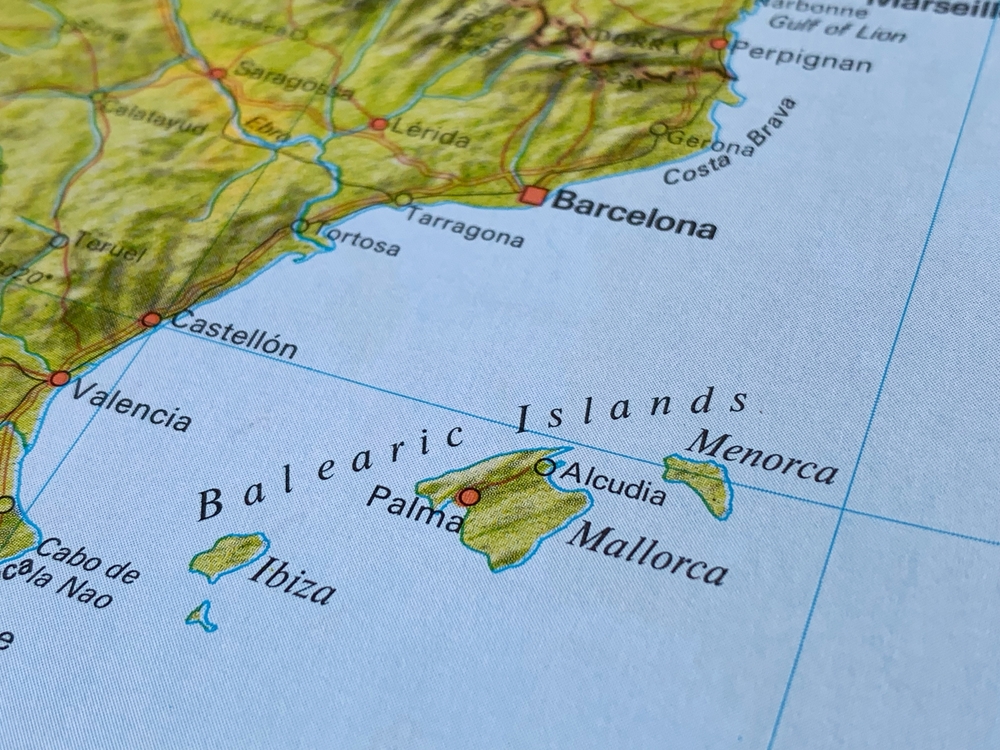Scientists recently uncovered a remarkable find beneath the Mediterranean Sea: an underwater bridge inside a partially flooded cave on the island of Mallorca. This ancient structure, hidden for thousands of years, reveals an important chapter in early human history. Built around 6,000 years ago, the stone crossing shows how prehistoric people in the western Mediterranean adapted to environmental changes with surprising innovation.
Although divers first spotted the bridge decades ago, researchers only recently recognized its true age and significance. By using modern dating techniques, they confirmed that this underwater bridge predates the Egyptian pyramids. This discovery reveals how early societies responded to rising sea levels and made creative use of their surroundings.
A Cave Hides a Forgotten Bridge
Genovesa Cave, located on the Spanish island of Mallorca, concealed this long-lost structure. Divers documented the sunken bridge around the year 2000. At the time, archaeologists believed it was about 4,400 years old based on nearby pottery remains.
However, a new analysis changed everything. Scientists determined that prehistoric builders constructed the underwater bridge between 5,964 and 5,359 years ago. Measuring approximately 7.6 meters, or 25 feet, the bridge consists of carefully stacked limestone blocks. Although rising sea levels have partially submerged it, the structure originally sat entirely above the water.
Its location across a subterranean lake suggests it served a specific purpose. Moreover, the craftsmanship involved highlights the builders’ planning and construction skills.
Read More: Camera Lowered Into Hole 93 Meters Beneath Antarctica Makes Stunning Discovery
Dating the Bridge with Stone and Sea
To pinpoint the age of the prehistoric bridge, scientists turned to geological evidence. They analyzed calcite rings and phreatic overgrowths on cave formations. These features formed when the water level inside the cave stayed stable for long periods. Since the underwater bridge lies beneath one of these rings, researchers concluded that ancient humans must have built it before the sea rose to that point.
Researchers also matched this data with known sea-level changes in the Mediterranean. This allowed them to determine when the cave last stood dry. Their findings offered an independent and reliable timeline for human activity in the region.
Importantly, this scientific method did not rely on artifacts alone. Instead, it used nature’s own markers to confirm that people lived on Mallorca far earlier than experts previously thought.
A Bridge with a Purpose
Although the underwater bridge’s exact use remains unclear, experts have proposed several explanations. They believe it may have connected two parts of the cave across an underground pool. This setup would have allowed people to reach a chamber that possibly served as a shelter, storage area, or ritual space.

Archaeologists also found pottery, tools, and the bones of Myotragus balearicus, an extinct native goat-antelope. These discoveries support the idea that humans used the cave regularly. The design of the ancient stone crossing, with its neatly stacked stones and absence of mortar, shows deliberate construction.
Clearly, the builders didn’t create this bridge for a temporary use. Its careful design points to a structure intended for long-term use, whether for practical or ceremonial reasons.
Read More: Could This Be It? New Planetary Discovery Fuels Hopes for Extraterrestrial Life
Changing the Story of Mediterranean Migration
The discovery also challenges long-held beliefs about human migration in the Mediterranean. Previously, historians thought people settled islands in the eastern Mediterranean, such as Crete and Cyprus, much earlier than those in the west. For example, most researchers believed that humans did not colonize Mallorca until around 4,000 years ago.
However, the underwater bridge proves otherwise. It pushes the timeline back by more than 1,500 years and narrows the historical gap between eastern and western island settlements. This sunken bridge suggests that early humans moved across the Mediterranean in broader and more synchronized patterns than once believed.
In other words, this single structure forces a reevaluation of how prehistoric people explored and settled new lands.

Science Brings the Past to Life
Beyond its historical value, the underwater bridge demonstrates how modern science can unlock ancient mysteries. Researchers used advanced tools, including 3D scanning and underwater imaging, to study the cave and its contents. These technologies allowed them to gather detailed data without disturbing the fragile environment.
Through this work, scientists revealed a story of human resilience and innovation. Ancient builders didn’t simply adapt to their surroundings; they actively shaped them. By constructing a submerged structure inside a remote cave, they showed remarkable foresight and creativity.
Today, their work still stands, offering a physical link between our world and theirs.
A Bridge Across Time
The underwater bridge in Genovesa Cave represents more than a physical structure. It connects us to a time when humans faced rising seas, yet still found ways to build, adapt, and survive. Built 6,000 years ago, this submerged structure reminds us of the ingenuity that early societies possessed.
Whether used for ritual, travel, or refuge, the prehistoric bridge speaks volumes about the people who created it. Their efforts continue to teach us about migration, construction, and survival in a changing world.
As scientists uncover more discoveries like this, they help us see our shared history with new clarity, sometimes hidden just beneath the surface.
Read More: Has Amelia Earhart’s Plane Finally Been Found? New Discovery Offers Compelling Clues
